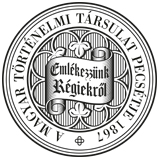Századok – 2006
TANULMÁNYOK - Horváth Pál: Meghatározó tudós elmék és eredmények a hazai jogi tudományosság fejlődésében 567
A HAZAI JOGI TUDOMÁNYOSSÁG FEJLŐDÉSE 589 negyedszázad fejlődését markáns tömörséggel kifejező változások — reformok — hatása alá kerülve Eckhart Ferenc ismét megtalálta élete értelmét és újabb nagyvolumenü kutató munkához látott. Tudományos tevékenysége így lett szerves alkotóeleme a hazai modern jogtörténettudományok kibontakozásának.11 9 Az alkotó munka színtere — „a Nagy Szeminárium" — tehát a hálás utókor számára méltán lett ismét Eckhart Ferenc Szemináriuma. OUTSTANDING SCIENTISTS AND RESULTS IN THE DEVELOPMENT OF HUNGARIAN LEGAL SCIENCE by Pál Horváth (Summary) The first lasting results of the research in the Hungarian legal history emerged as early as second half of the 18t h century. These endeavours were aroused by the idea of enligthtment and the national consciousness beginning to awake, but the research in the history of public law supporting the interests of the Habsburg-House exerted influence also in this direction in the second half of the 18t h century. In the first half of the 19t h century the romantic nationalism urged the thinkers to explore the past of the Hungarian law. The founders of the methodical research in legal history, however, recognized, after a short time, that the historical (feudal) law had become the shackles of social progress. From this recognition arose the liberal legal historism of the Hungarian reform period which emphasized the necessity of the comparative research of legal development while enriching the ideas of enlightment. But these precious endeavours were not able to penetrate into the official legal science at the age of Metternich. The declining feudal state preferred the view of legal history originating on German soil (Savigny) which in Hungary could develop only in the field of private law at that age (Ignácz Frank). After 1849 the cultural policy of the Habsburg neoabsolutism (Leo Thun Hohenstein) also supported his this Middle-Ages-centered view of legal history but continued to hinder teaching of the Hungarian national legal history for a long time. In spite of external, hindering factors the methodical research on legal history really achieved significant results in the 19t h century. The entire development of the science of legal history, however, was deformed by the Middle-Ages-centered view of the research work. Neighter was it beneficial to the scientific progress that the elaboration of the methodology of legal history did not take place in the whole period of the legal science of bourgeois character. The lack of methodology became evident particularly when the reactionary nationalistic legal historiography put forward by Timon became dominant after the turn of the century. The legal historiography of the first four decades of the 20t h century in Hungary was characterized practically by the crisis of the Hungarian legal historism. Therefore, reactionary nationalism looking back to the past, opposition to the neighbouring people and methodological inadequacy were the main features of the legal historiography during the decades between the two world war's. The treatise analyses this extremely complicated development of hiátory of ideas in the light of the latest experiences in the history of science and methodology. At the same time it reveals the relation of the main trends of the Hungarian legal historism to the tendencies which furthered the development of the research in the comparative legal history. 119 Még egy merőben új utakat kereső monográfia (A földesúri büntetőbíráskodás a XVI-XVII. században. Bp. 1954. 111. a posztumusz közkinccsé vált második kötete a főbb gazdaságtörténeti kutatásainak (ld. A bécsi udvar gazdaságpolitikája Magyarországon 1780-1815. Bp. 1958. 492.) adott bizonyítékot erre a megállapításunkra. Vö. A. Spiesz: Eckhart Ferenc, a gazdaságtörténész, in: Jogtudományi Közi. 1986. évf. 338-339.
